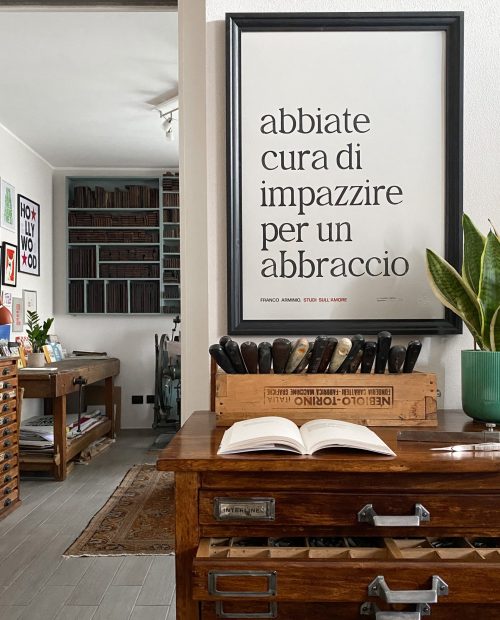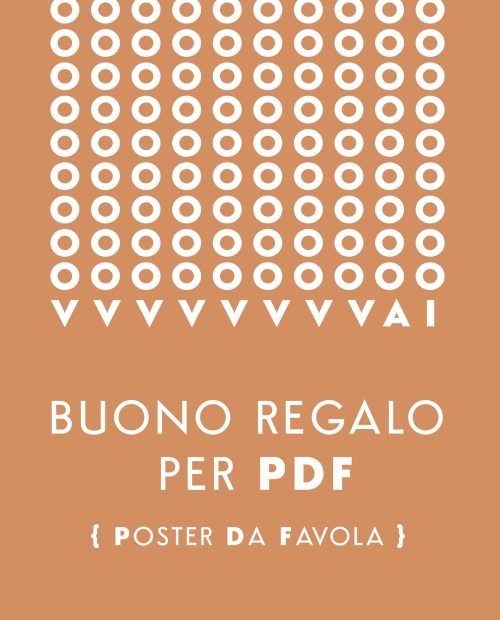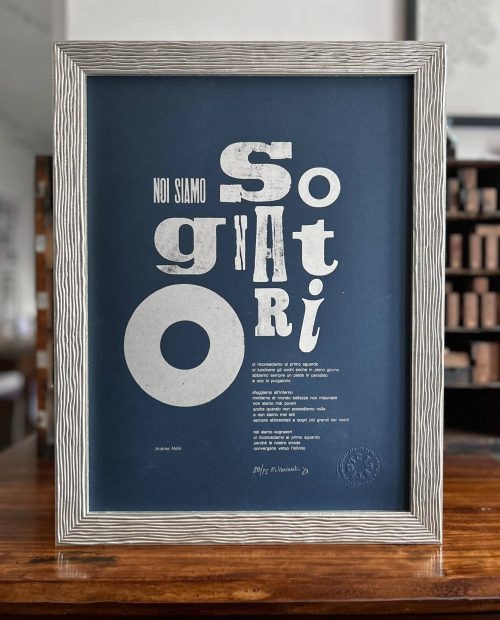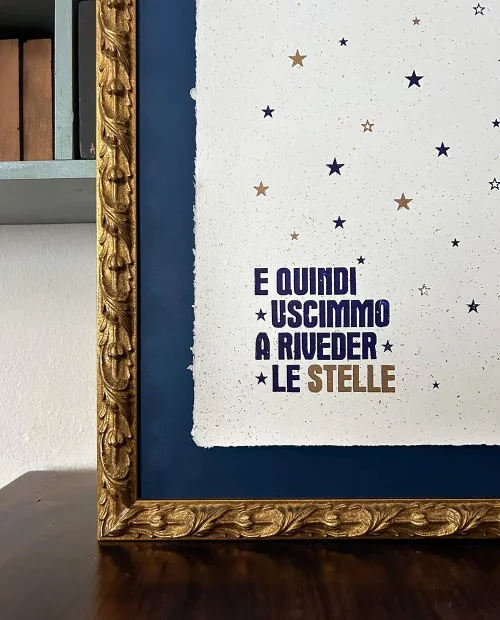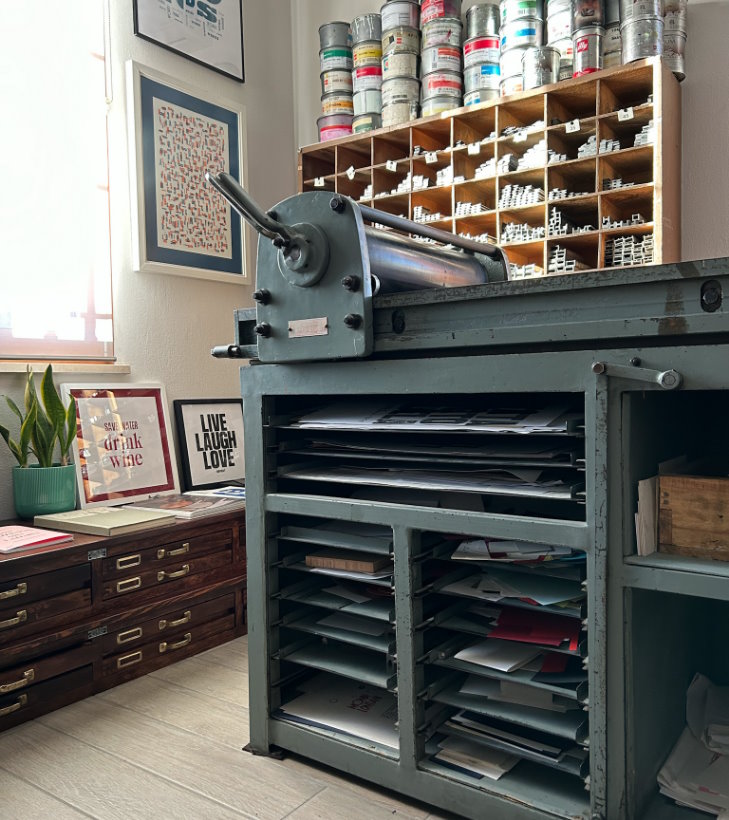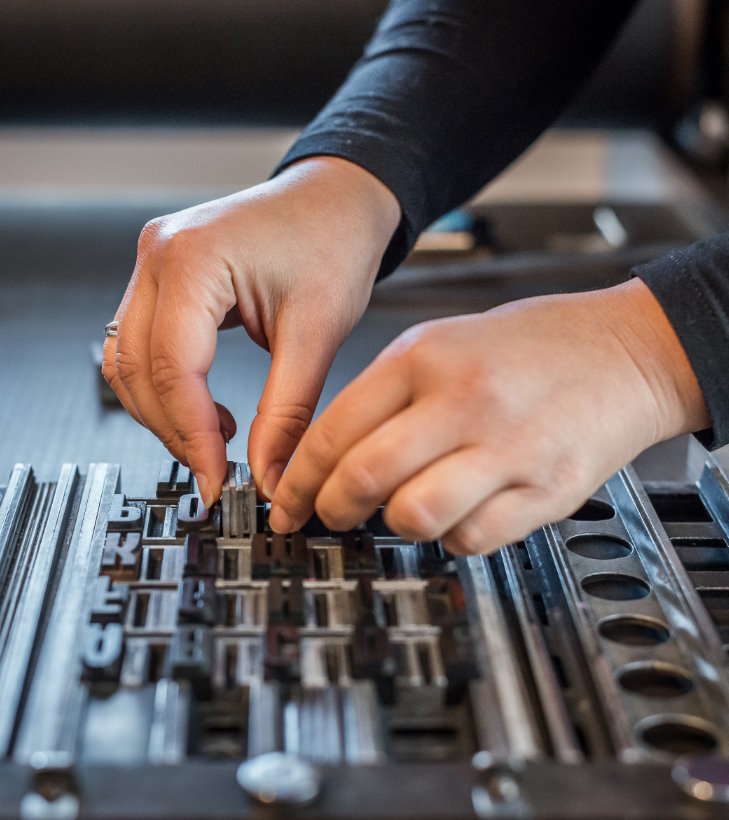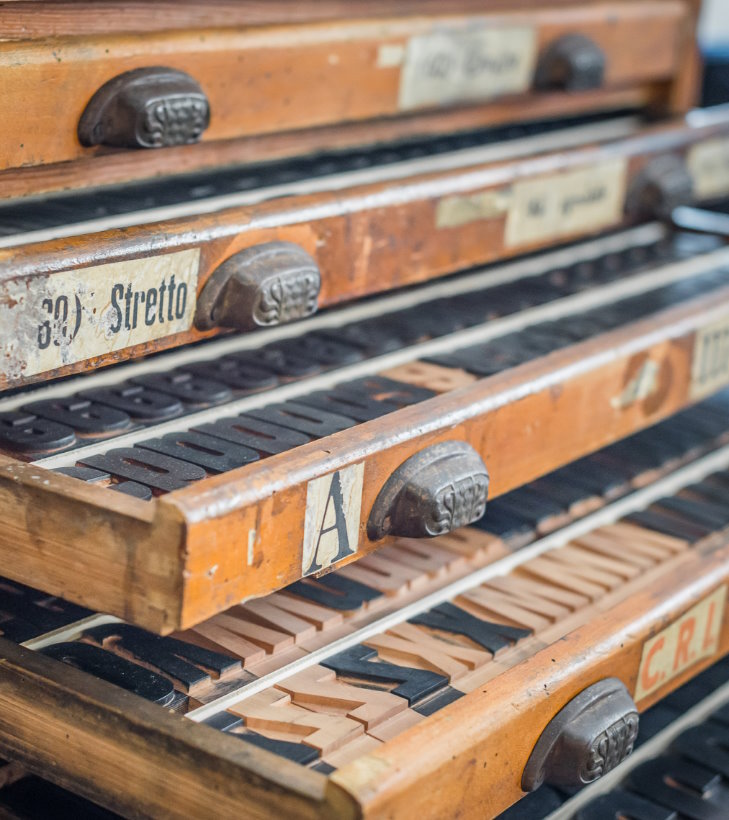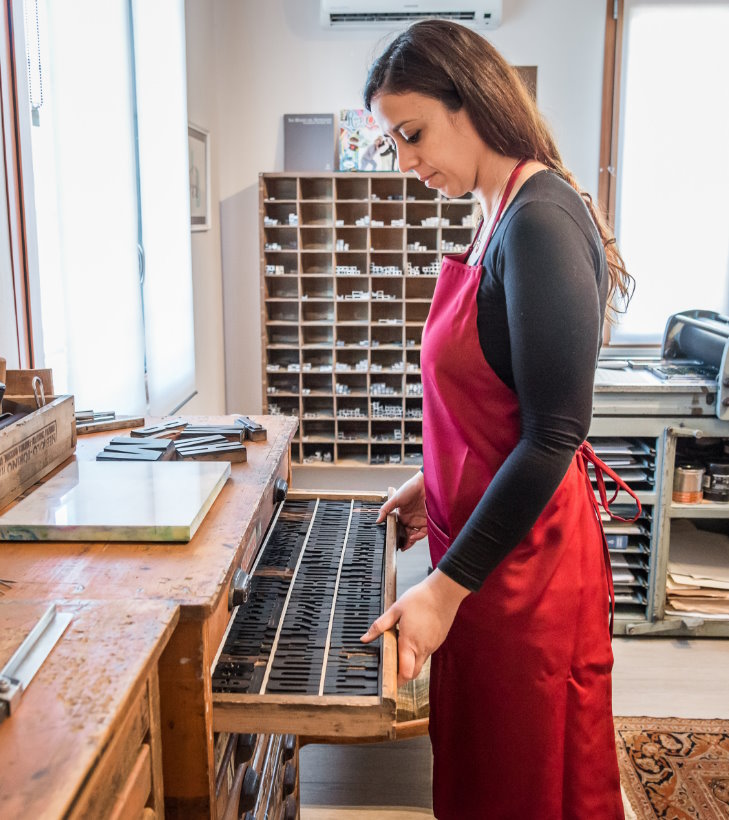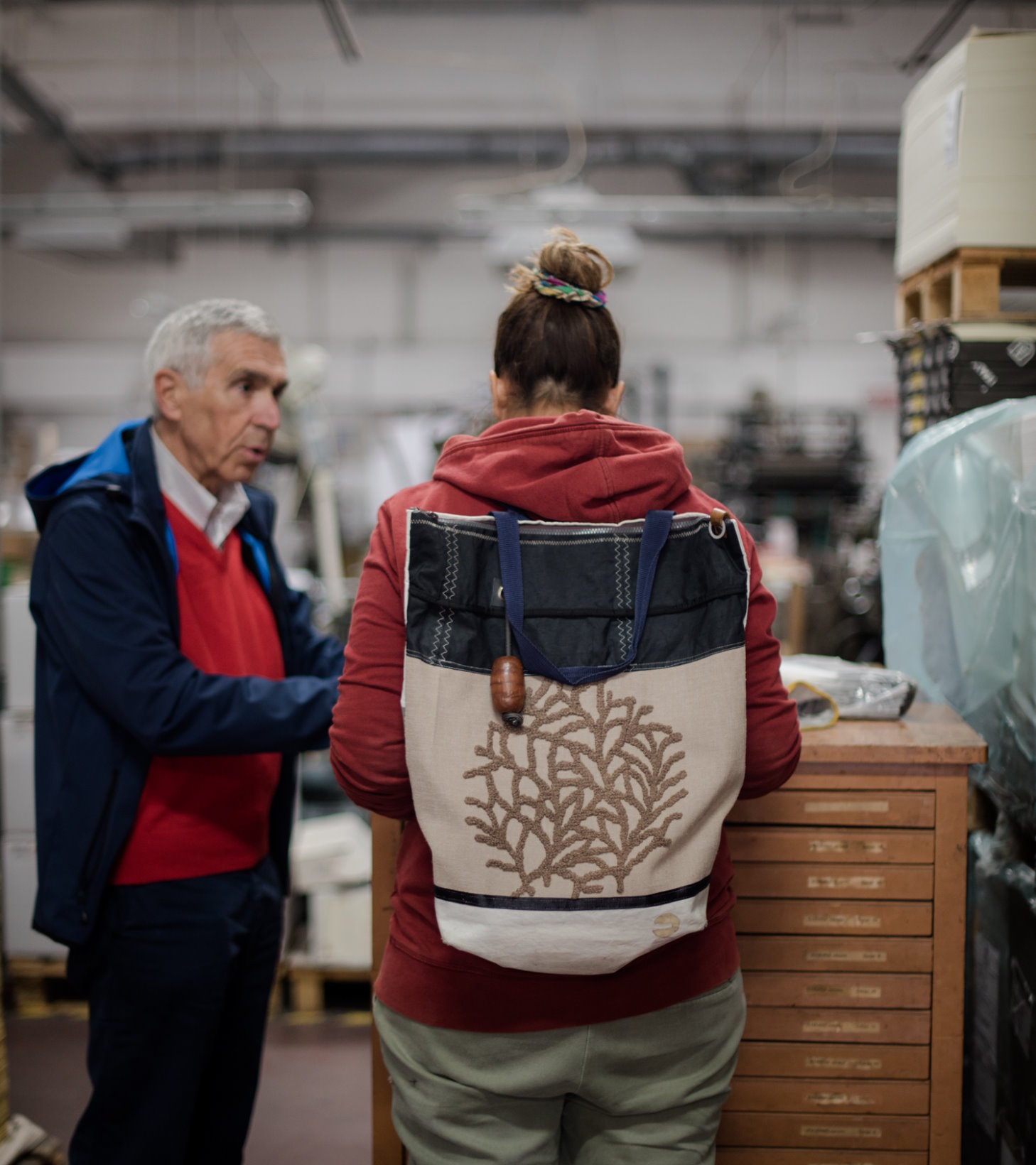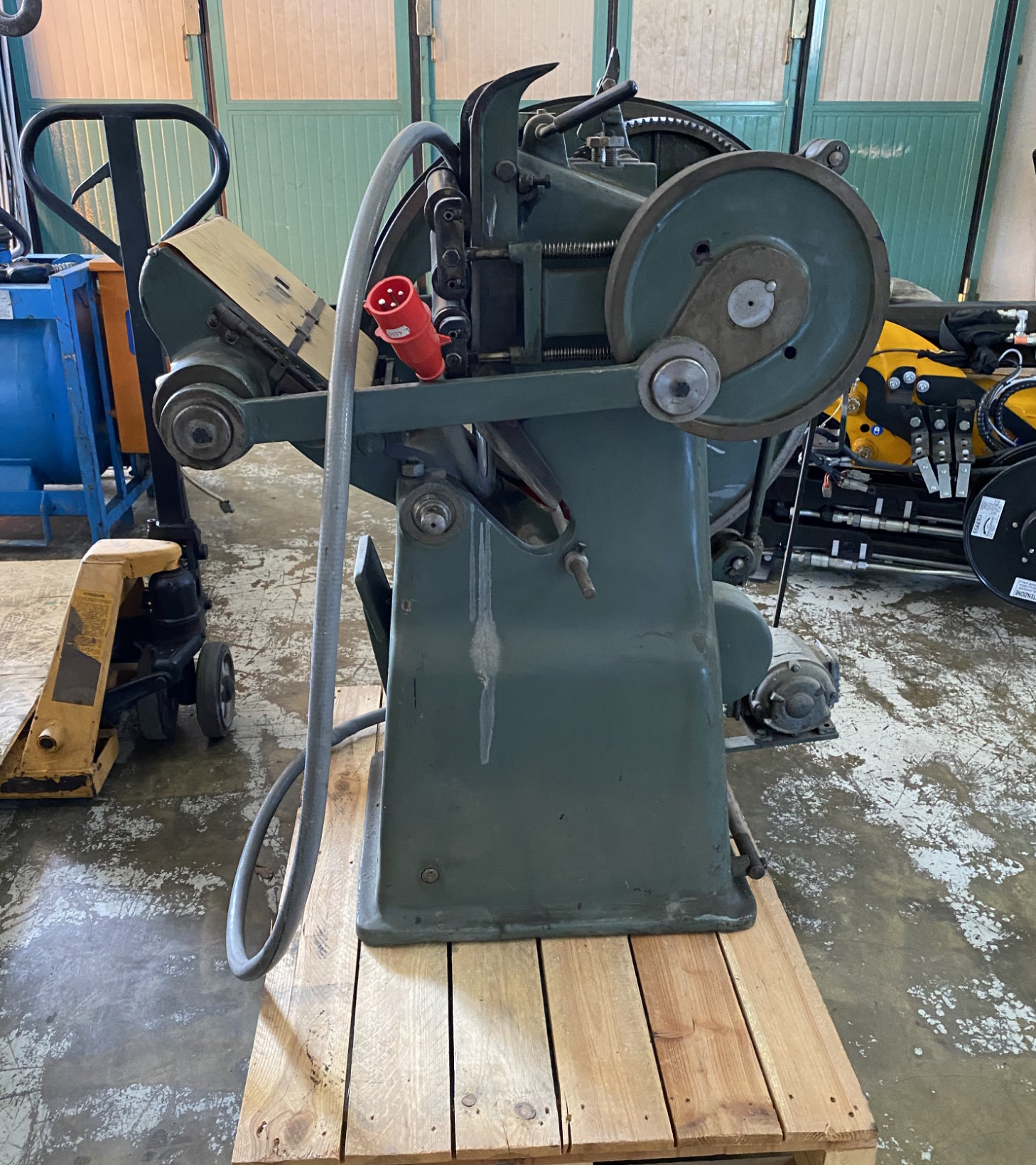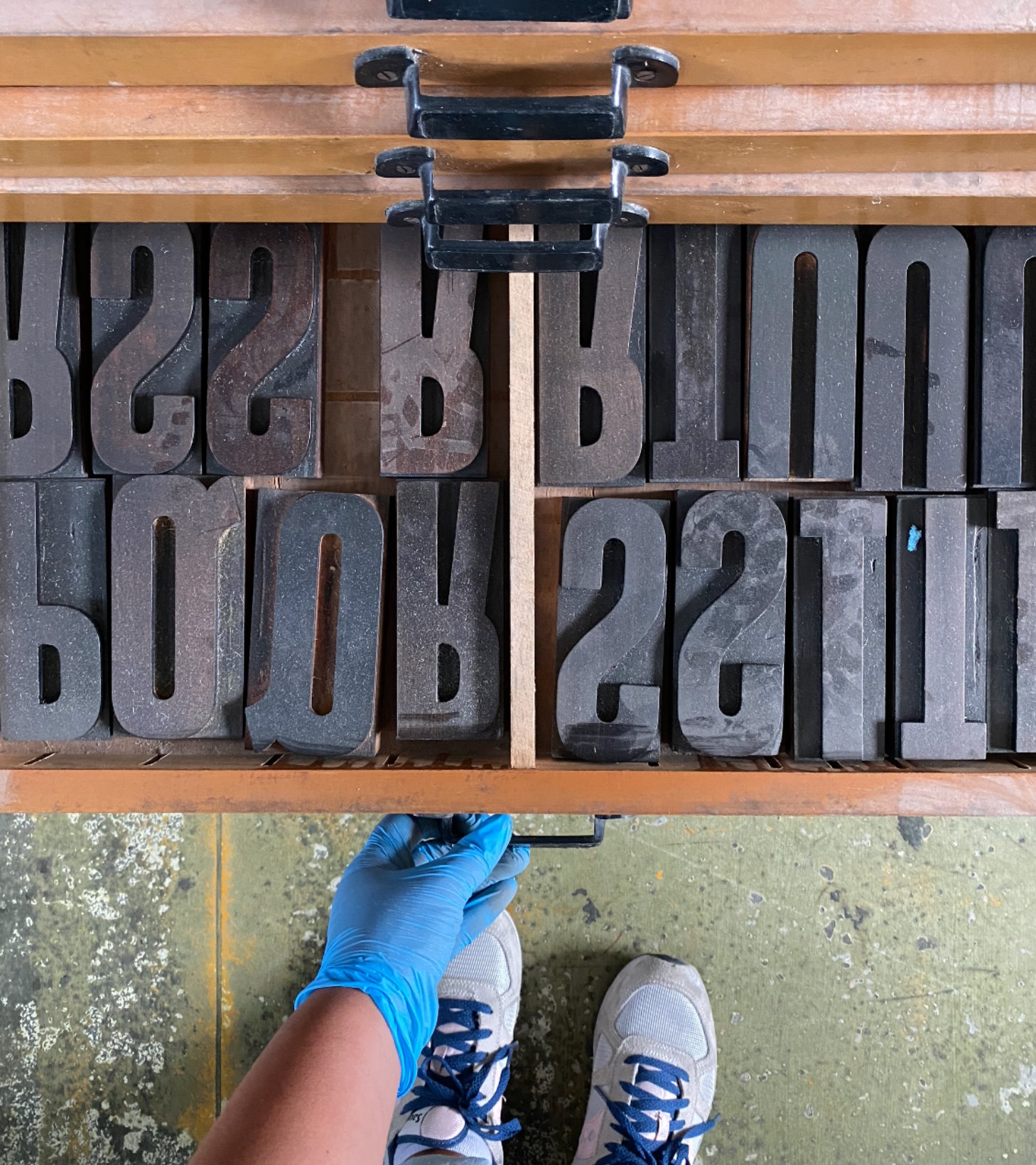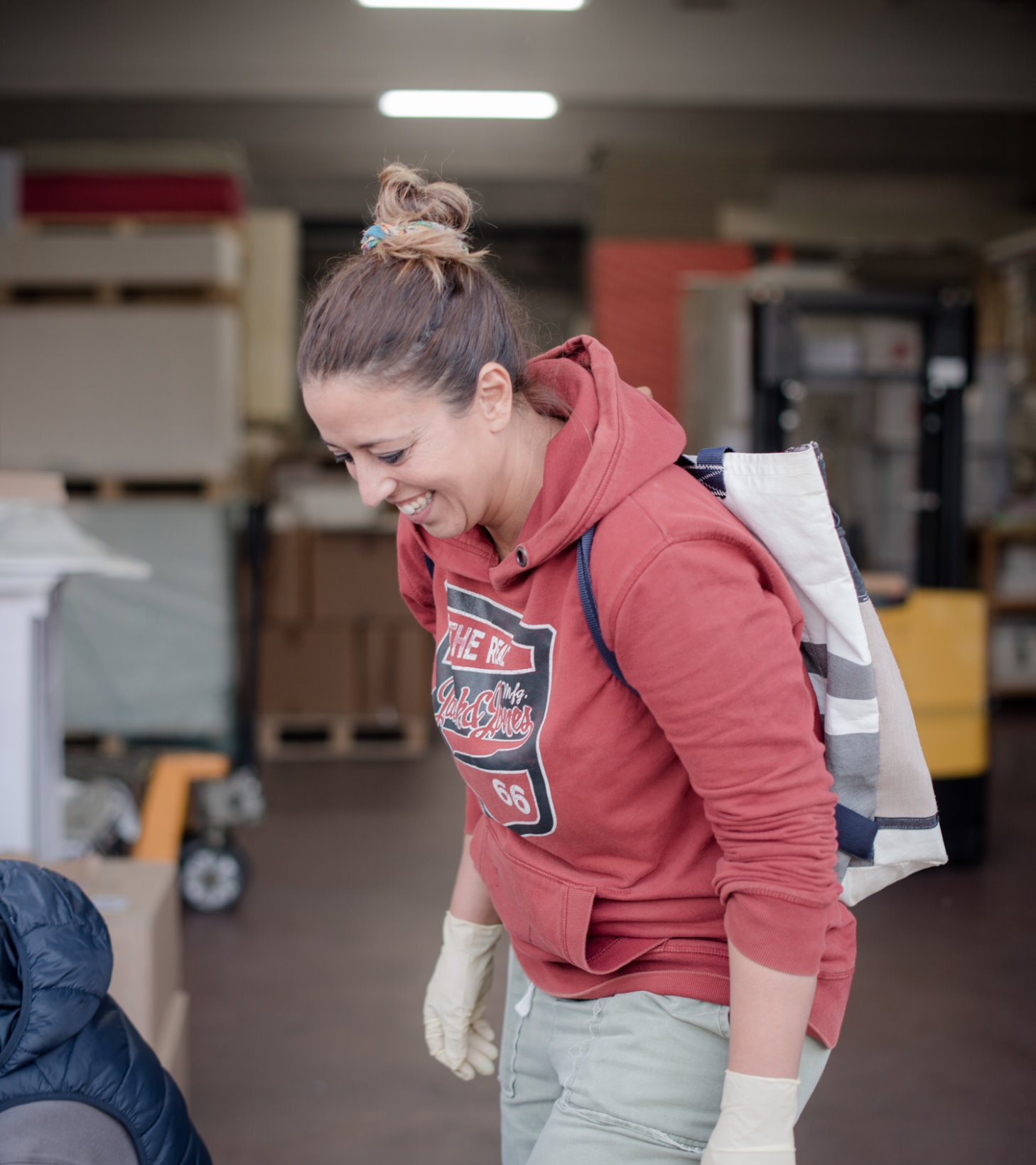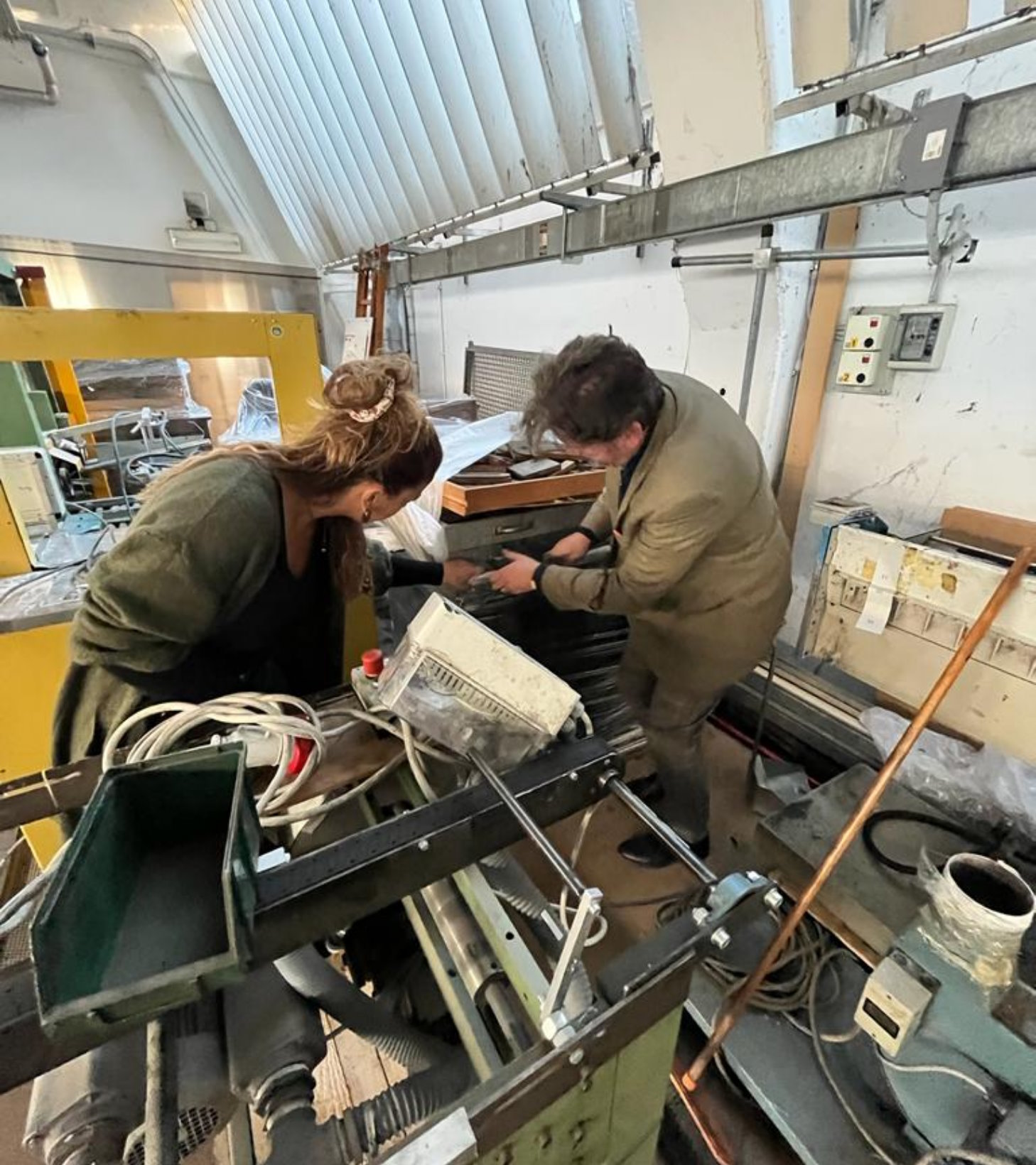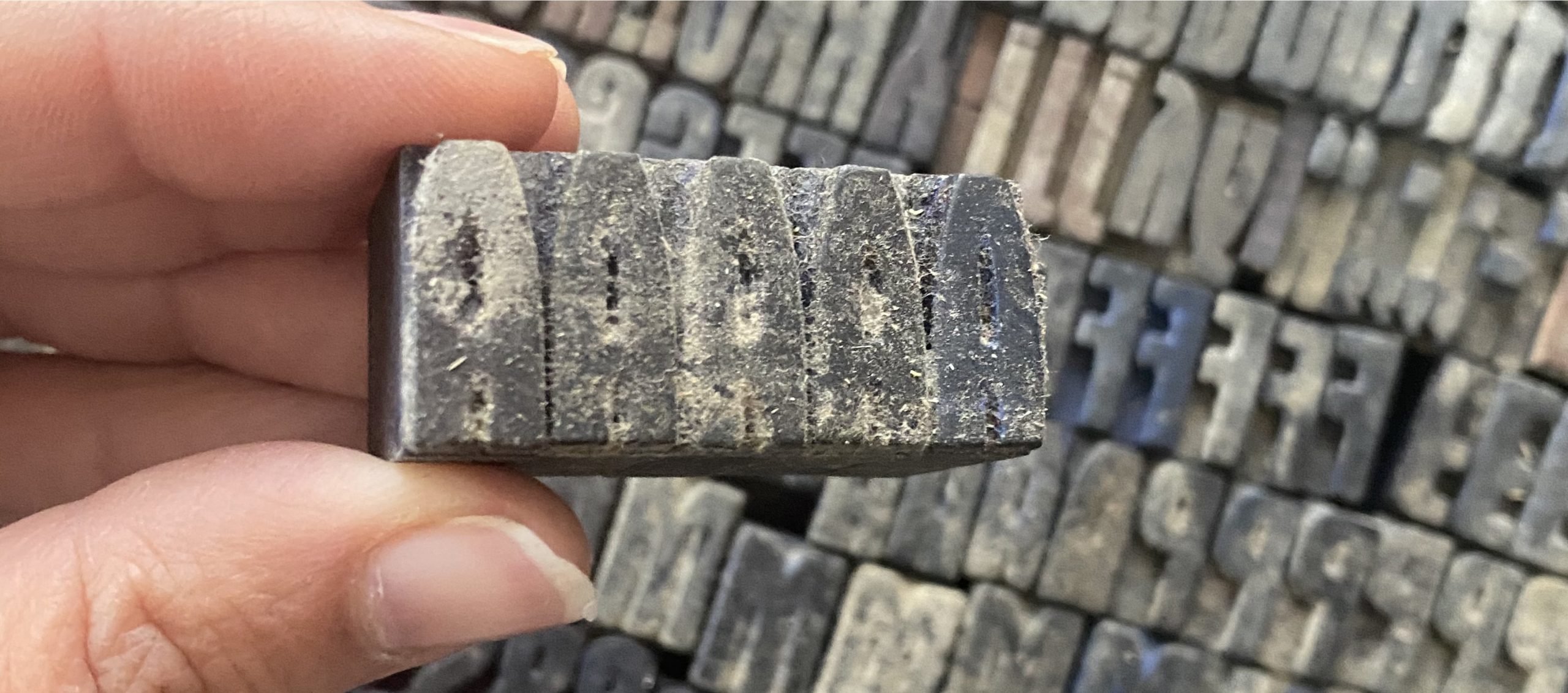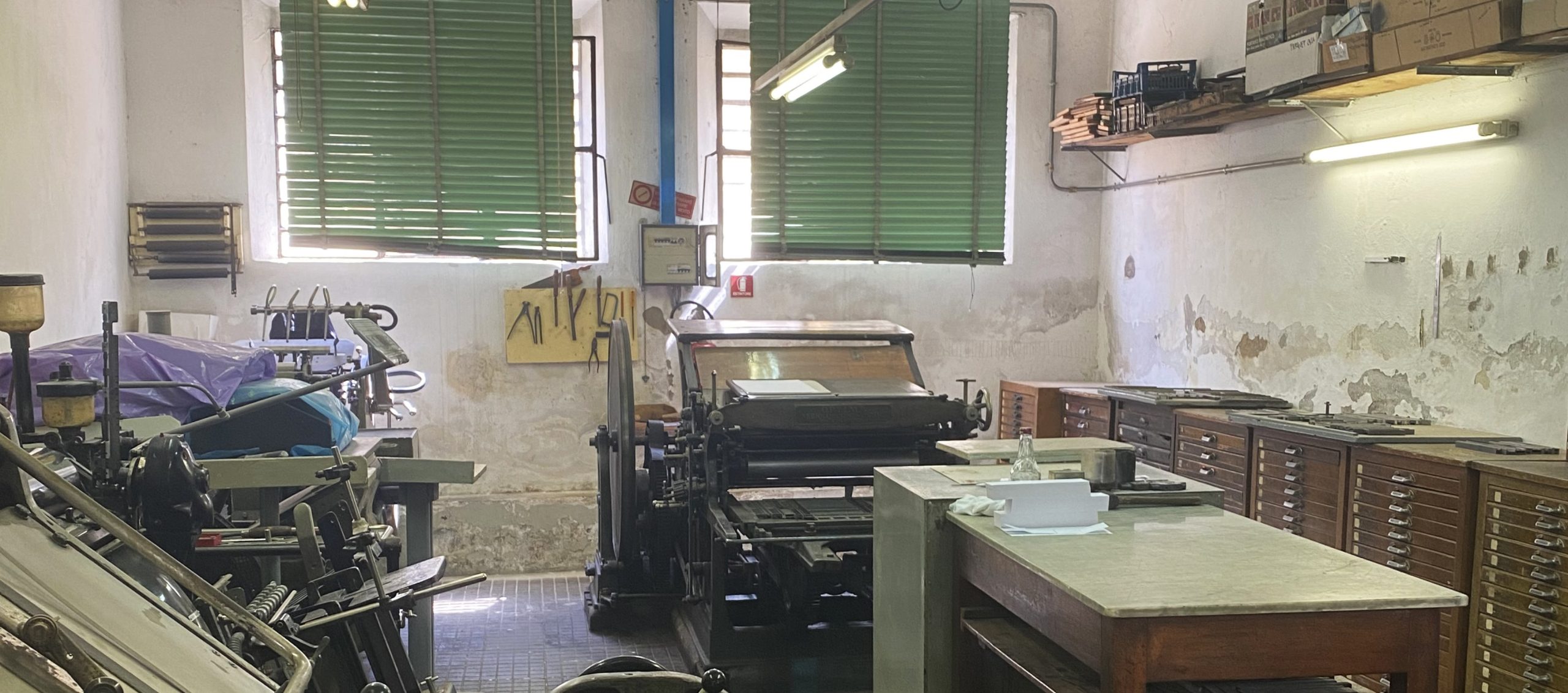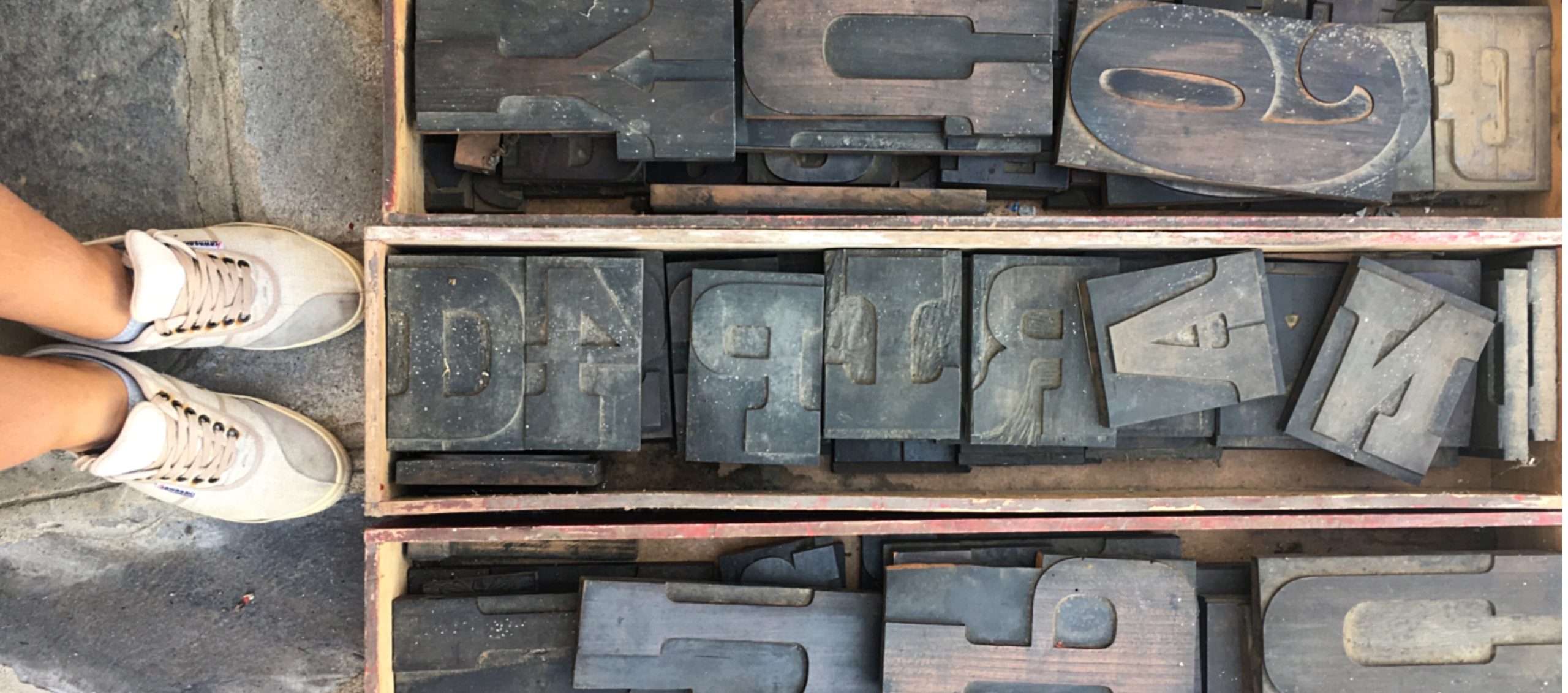Hi, I’m LA TIPOGRAFA TOSCANA (The Tuscan Typographer)
Basically I’m a graphic designer: I’ve done it for years – I’ve also worked as teacher in graphics in many (MANY) high schools up and down Tuscany.
Over my career I have designed branding, I have held meetings, I have thought about marketing and I have endured briefings.
All of my life’s work up to that point was digital.
Today it isn’t anymore. Today I live and work in my atelier in the Tuscan countryside.
But how did I find myself in this situation? But how did I find myself in this situation? How is it that fonts become characters?
Well…
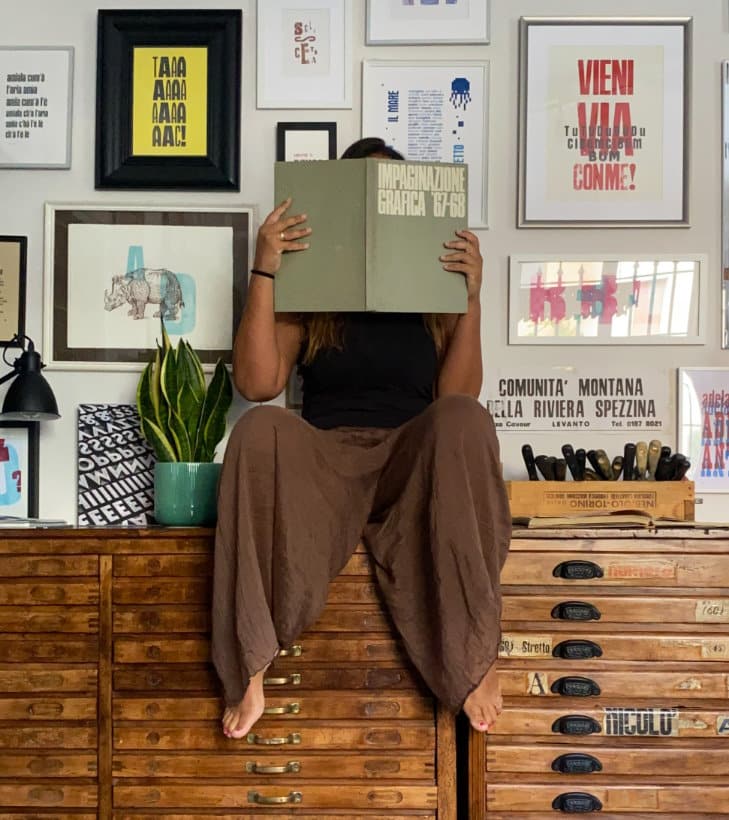
I began my career as a graphic designer in Oliviero Toscani Studio, taking care of the image for brands such as Artemide, Genertel, Pam, Rare, Nolita, Cocif, Aspesi.
After many years, however, I felt the need to rediscover a form of creativity with a different rhythm, a different pace. You’ve felt it too: the need to work with your hands, to immerse yourself totally in every single project, to leave behind both watch and compass. …
I went out LOOKING for typography – but perhaps it was me who was found. I slowly approached this world and before I knew it, I was in it up to my neck.
Cue life-changing realization: that’s enough, I want to do just this, I want to be a typographer.
Only then you discover that starting out your life as a typographer isn’t the easiest thing in the world.
It’s not really “THAT’S IT”: you open up shop and it’s all done.
Typography – and therefore life in the workshop – is diametrically opposed to the dizzying speed of working digitally.
It’s a modus operandi that takes time, patience, and lots of coffee.
It is a place where, because of space issues, haste must remain at the door. Where you can (you kinda have to) immerse yourself in typography and printing to see your projects come to life.
A way of doing things that extends well beyond the printing machine.

Take characters, for example. And when I say “take” I mean get in the car, find the place on the map and go look for entire drawers of characters forgotten in historic typographies in the south, north and centre.
Then there’s the talking, the negotiating and the getting to know other craftsmen who are willing to share their passion with you.
It is a painstaking and – I confess, at times unnerving – salvaging work.
But when you come home with a full car, and a full heart, you understand that the magic of typography isn’t just what ends up printed on paper.
Type is mobile, and in most cases, the typographer needs to be also.
I sourced and recovered the characters that I use in my Typographic Atelier up and down Italy. I found them, took them back to the typography and restored them (woodworms be damned).
If you want to find out more about typography and my salvaging work, read my entries on my blog!
